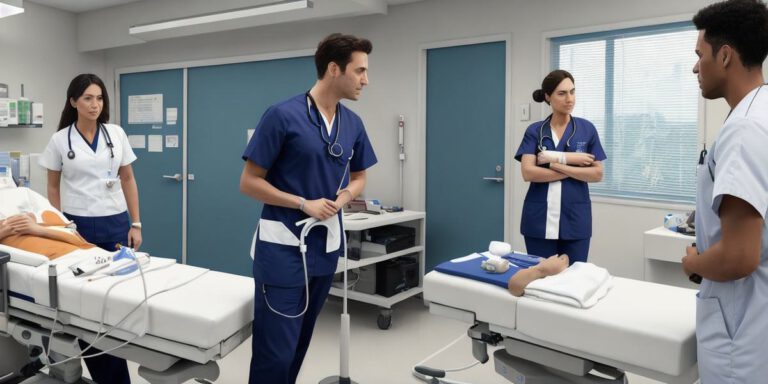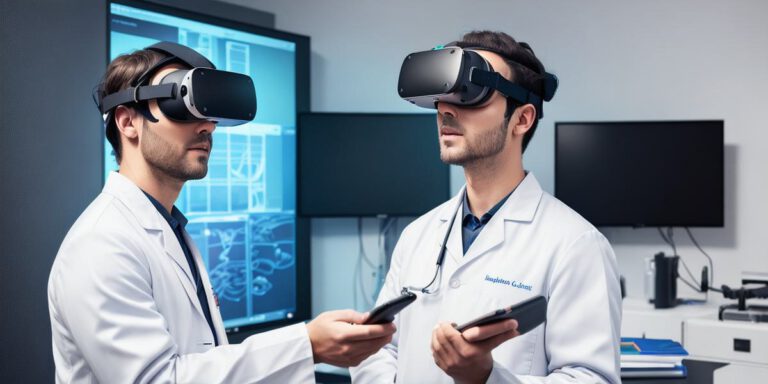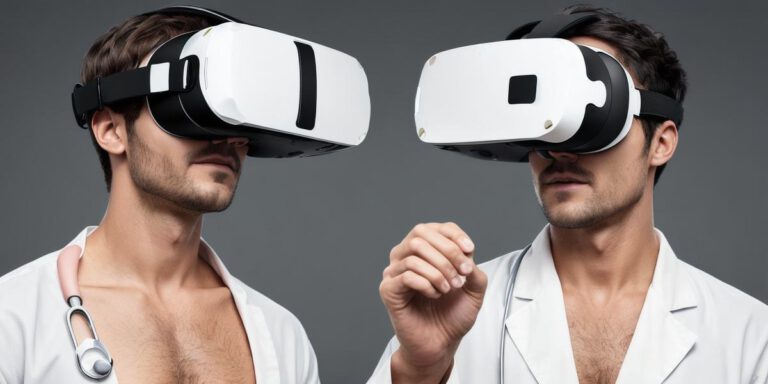VR Simulations in Medical School: Enhancing Clinical Skills and Diagnostic Abilities through Virtual Reality.

Title: Virtual Reality Simulations in Medical School: A Revolutionary Approach to Clinical Skills and Diagnostic Abilities
Virtual reality (VR) technology is transforming the field of medicine, offering medical students an immersive and interactive way to learn and practice clinical skills. In this article, we will explore how VR simulations can enhance medical education and prepare students for real-life scenarios.
One of the key benefits of VR simulations in medical school is the ability to provide a safe and controlled environment for students to practice their skills. With VR technology, students can simulate complex procedures without risking harm to patients or themselves. For example, a student could practice performing a delicate surgery on a virtual patient with the guidance of an experienced surgeon.
In addition to providing a safe space for practice, VR simulations can also improve diagnostic accuracy. By allowing students to visualize and interact with virtual organs and tissues, they can gain a deeper understanding of human anatomy and identify potential health issues more accurately than traditional methods. This can lead to more effective treatments and improved patient outcomes.
Case studies have shown that VR simulations are particularly useful in training medical professionals for high-risk procedures, such as emergency surgeries or trauma care. In one study, surgeons who received VR training were able to complete complex procedures faster and with fewer errors than those who did not receive the training.
Another benefit of VR simulations is their ability to provide personalized learning experiences. Each student can work at their own pace and focus on areas where they need more practice. This can help students develop their skills more effectively and improve their overall performance.
While VR technology offers many benefits, there are also some challenges that must be addressed. For example, the cost of VR equipment can be prohibitive for many medical schools, and the technology may not be accessible to all students. In addition, there is a risk of over-reliance on technology, which could lead to a lack of hands-on experience and practical skills.
Despite these challenges, the potential benefits of VR simulations in medical school are clear. By providing a safe and interactive way to practice clinical skills and improve diagnostic accuracy, VR technology has the potential to revolutionize medical education and prepare students for real-life scenarios. As technology continues to advance, we can expect to see even more exciting developments in this field.
FAQs:
- What types of procedures can be simulated using VR technology?
- VR technology can simulate a wide range of procedures, including surgery, trauma care, and emergency medicine.
- How effective are VR simulations at improving diagnostic accuracy?
- Studies have shown that VR simulations can improve diagnostic accuracy by allowing students to visualize and interact with virtual organs and tissues in a more realistic way.
- What are the challenges of implementing VR technology in medical school?
- The cost of VR equipment, accessibility to all students, and over-reliance on technology are some of the challenges of implementing VR technology in medical school.








